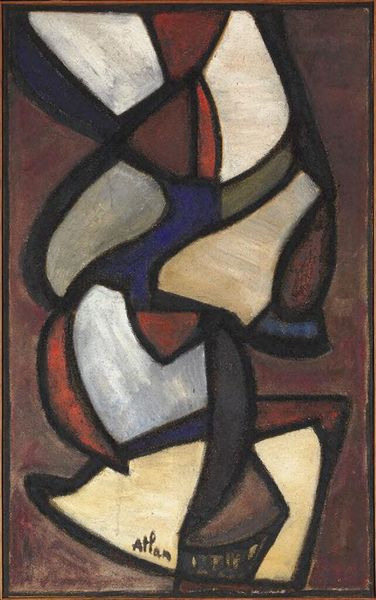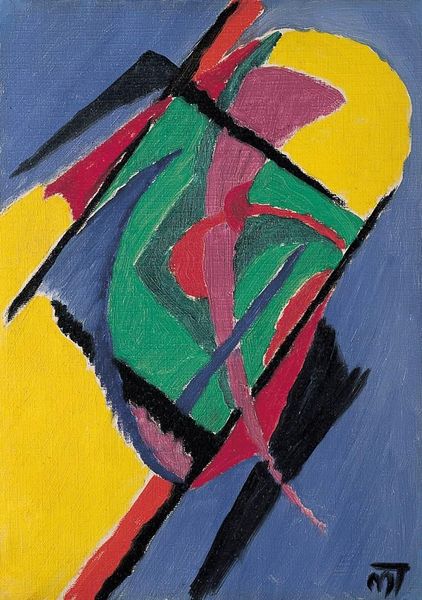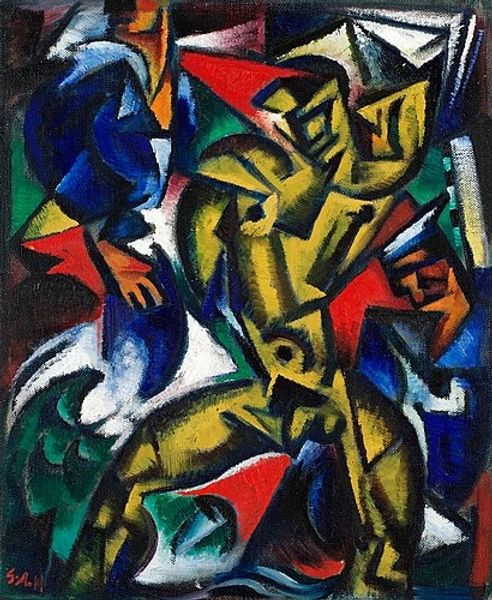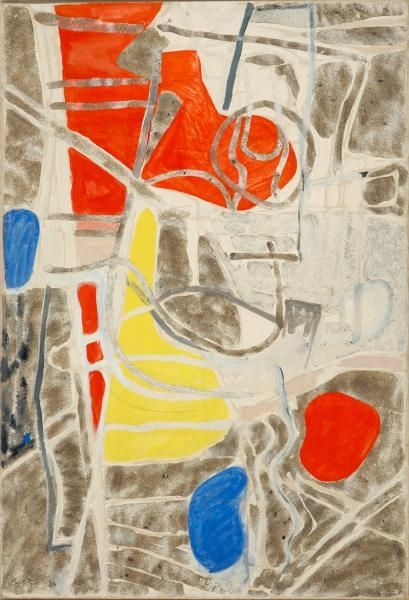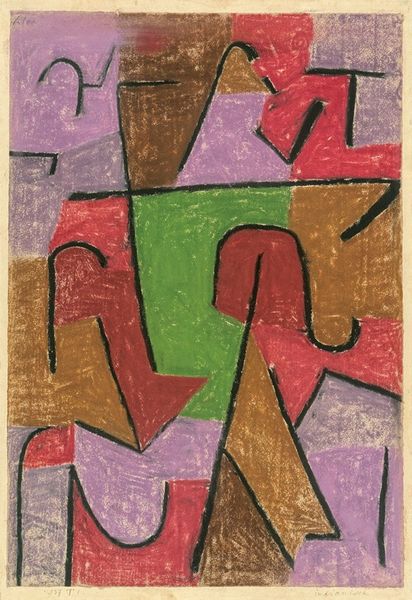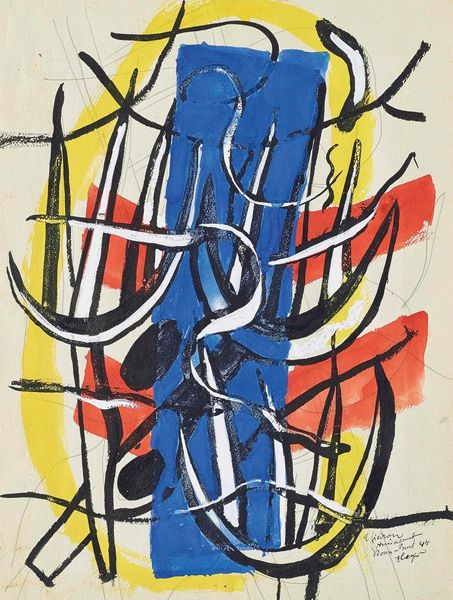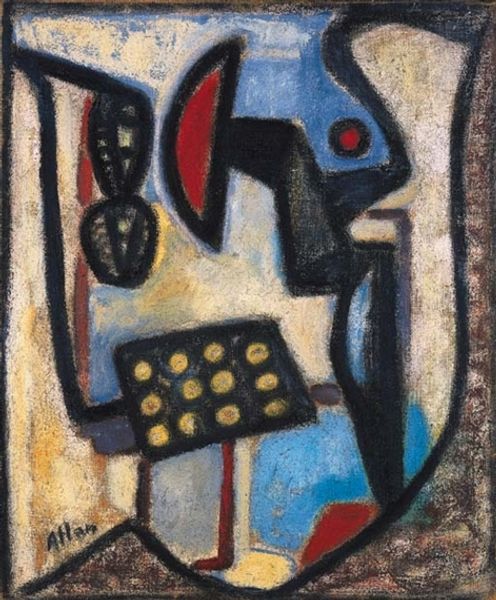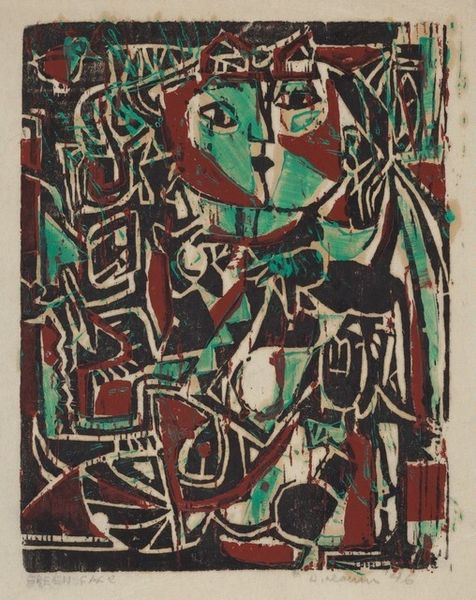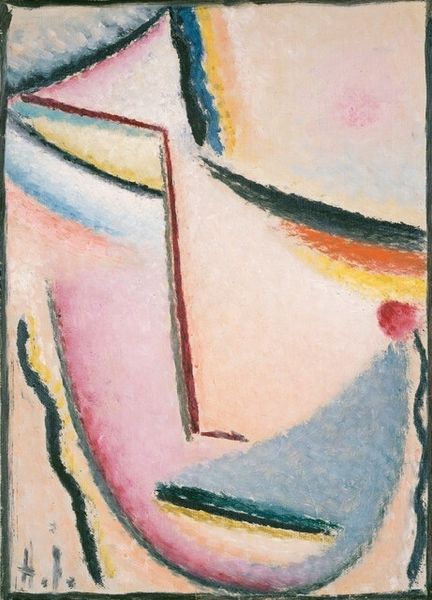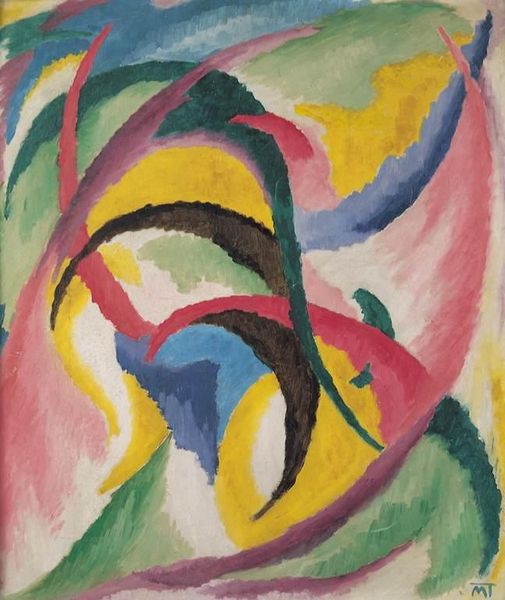
painting, acrylic-paint
#
abstract-expressionism
#
painting
#
acrylic-paint
#
form
#
acrylic on canvas
#
geometric
#
abstraction
#
line
Copyright: Jean-Michel Atlan,Fair Use
Curator: Immediately I sense such dynamic energy! This 1959 piece, "Opera Kurde" by Jean-Michel Atlan, presents as acrylic paint on canvas. There's this incredible layering effect that really grabs your attention, isn't there? Editor: Indeed, Atlan certainly isn’t shying away from the bold here. Looking at “Opera Kurde” from a historical context, it appears as though Atlan, consciously or unconsciously, is negotiating with postwar trauma. The raw, almost primal, quality in the frenetic line work and the restricted palette of stark primary colors—speaks to a kind of urgent struggle. Curator: Yes! Considering his involvement with the COBRA movement, one might read it as an articulation of collective, post-war European anxieties but rendered with a particularly, distinctly, Kurdish narrative thread. The title itself suggests a confluence of identity and expression. How much do Kurdish cultural symbols inform its creation or reception? Is Atlan making some form of historical commentary about Kurdish suffering and strife, through the lens of post-war Europe? Editor: That's a compelling reading, but to really unpack that we’d need deeper insight into Atlan’s own socio-political views and artistic intentions regarding Kurdish identity at this time, especially from primary sources that may or may not exist. Absent concrete documentation, aren't we projecting? I also believe there might be less commentary than expression, that his formal approach is influenced and reflecting a shared artistic and philosophical experience rooted in expressionist practice, of line, of gesture. I think we can view his choice of line work alongside considerations of form and geometric values as intentional abstraction. Curator: Intention is only a single variable. Considering its exhibition history and subsequent critical discourse around "Opera Kurde" what prevailing sentiments surface? Are we looking at mere projection or historical interpretation contextualized by socio-cultural theories? Can we definitively prove that this is merely formalist abstraction when we also see clear thematic signifiers in the work itself? Perhaps its most significant gesture lies in provoking us to wrestle with this unresolved ambiguity. Editor: Perhaps the beauty of the painting lies there, precisely in that state of ambiguous interrogation, as opposed to the act of resolution itself, which I'm not sure is entirely ours, nor, indeed, its place, or our jobs. Curator: An invitation rather than a statement. Nicely said. Editor: Indeed.
Comments
No comments
Be the first to comment and join the conversation on the ultimate creative platform.



